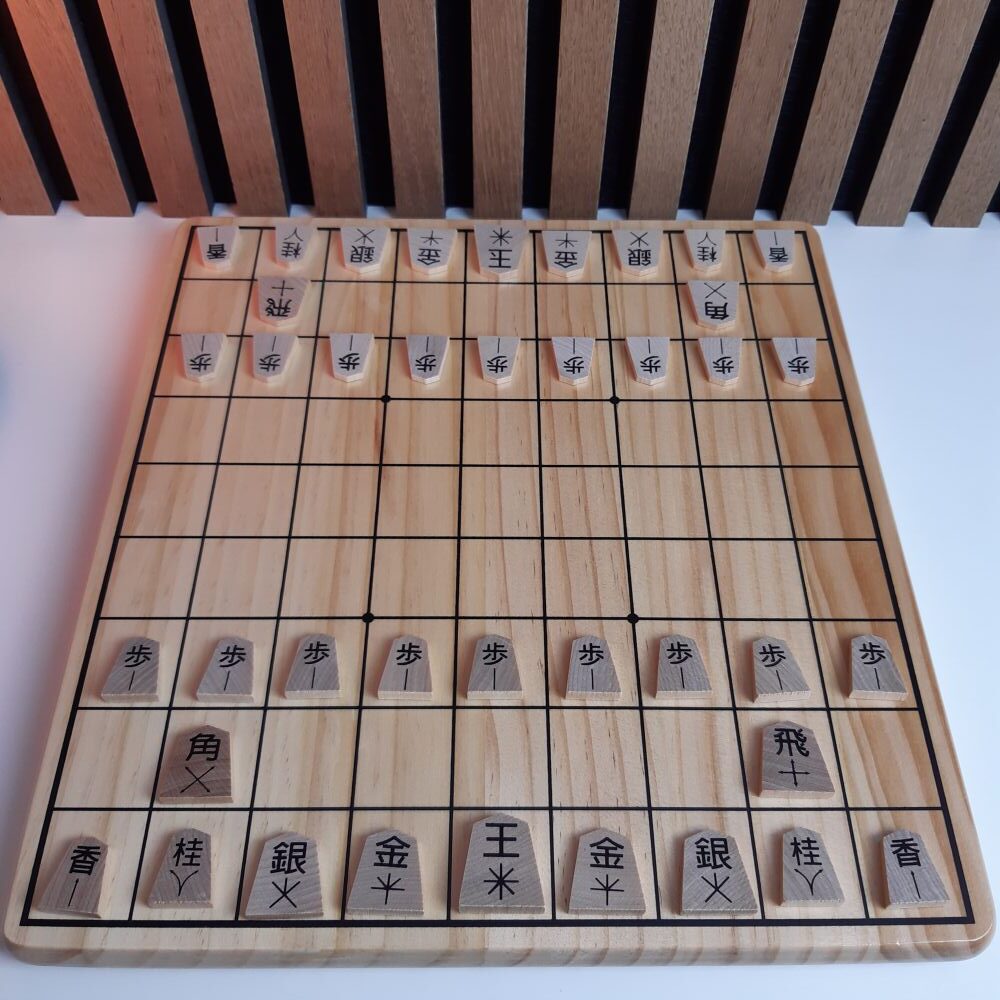New to Shogi? Please note: we highly recommend watching one of the many beginner-friendly YouTube tutorials out there 😊
Check out this Video from Triple S Games
A (very) basic introduction
Shogi is a traditional Japanese board game that is often referred to as Japanese chess. The game is played by two players and can be enjoyed by both beginners and seasoned players.
Object of the Game
The goal of Shogi is to capture your opponent’s king. This is done by placing the king in checkmate, which means that the king is under attack and there is no way for it to escape capture.
Game Setup
Shogi is played on a board that is 9 squares wide and 9 squares long. Each player starts with 20 pieces, which are placed on opposite sides of the board across three rows.
Each player has the following pieces:
- 1 king
- 1 rook
- 1 bishop
- 2 gold generals
- 2 silver generals
- 2 knights
- 2 lances
- 9 pawns
The pieces are arranged as follows (from the player’s point of view, bottom to top):
First row (nearest to the player):
Lance – Knight – Silver General – Gold General – King – Gold General – Silver General – Knight – Lance
Second row:
Blank – Bishop – Blank – Blank – Blank – Blank – Blank – Rook – Blank
Third row:
9 Pawns, one per square
Please refer to this image:

Gameplay
Players take turns moving one piece at a time. Each type of piece moves differently:
- King: moves one square in any direction
- Rook: moves any number of squares horizontally or vertically
- Bishop: moves any number of squares diagonally
- Gold General: moves one square in any direction except diagonally backward
- Silver General: moves one square diagonally or one square straight forward
- Knight: moves two squares forward and one square to the left or right (only forward)
- Lance: moves any number of squares straight forward
- Pawn: moves one square straight forward
Captured Pieces and Drops
Captured pieces are not removed from the game – instead, the capturing player can reuse them by placing them (dropping) on an empty square on the board as their own piece on a later turn. Dropped pieces return to the board in their original, unpromoted state.
Promotion
When a pawn, lance, knight, silver general, bishop, or rook moves into, within, or out of the opponent’s territory (the last three rows on the opponents side), it may be promoted.
Promotion changes how a piece moves:
- Pawn -> promoted pawn (moves like a gold general)
- Lance -> moves like a gold general
- Knight -> moves like a gold general
- Silver General -> moves like a gold general
- Bishop -> gets the ability to move one square orthogonally in addition to diagonals (called a “horse”)
- Rook -> gets the ability to move one square diagonally in addition to straight lines (called a “dragon”)
Promotion is optional in most cases, but mandatory for pawns, lances, and knights if they would otherwise have no legal moves.
Endgame
The game ends when one player checkmates the opponent’s king, resigns, or a draw is agreed upon. Repetition of moves and impasse (when both players have advanced kings and cannot checkmate) can also result in a draw under certain rules.
Conclusion
Shogi is a fun and challenging game that requires strategy and adaptability. The ability to reuse captured pieces adds a dynamic twist that sets it apart from Western chess. With practice, anyone can learn to enjoy this fascinating Japanese board game!
